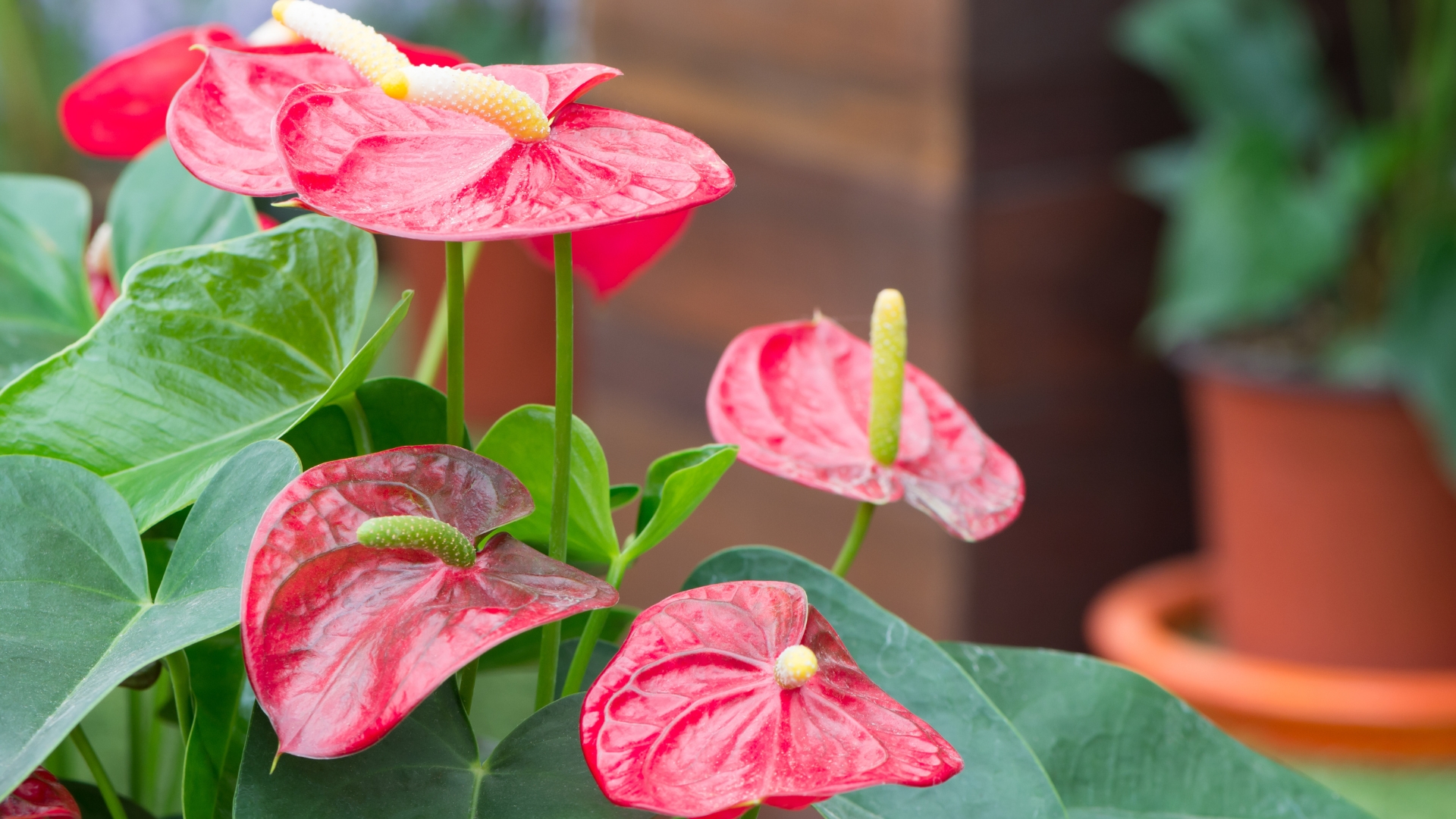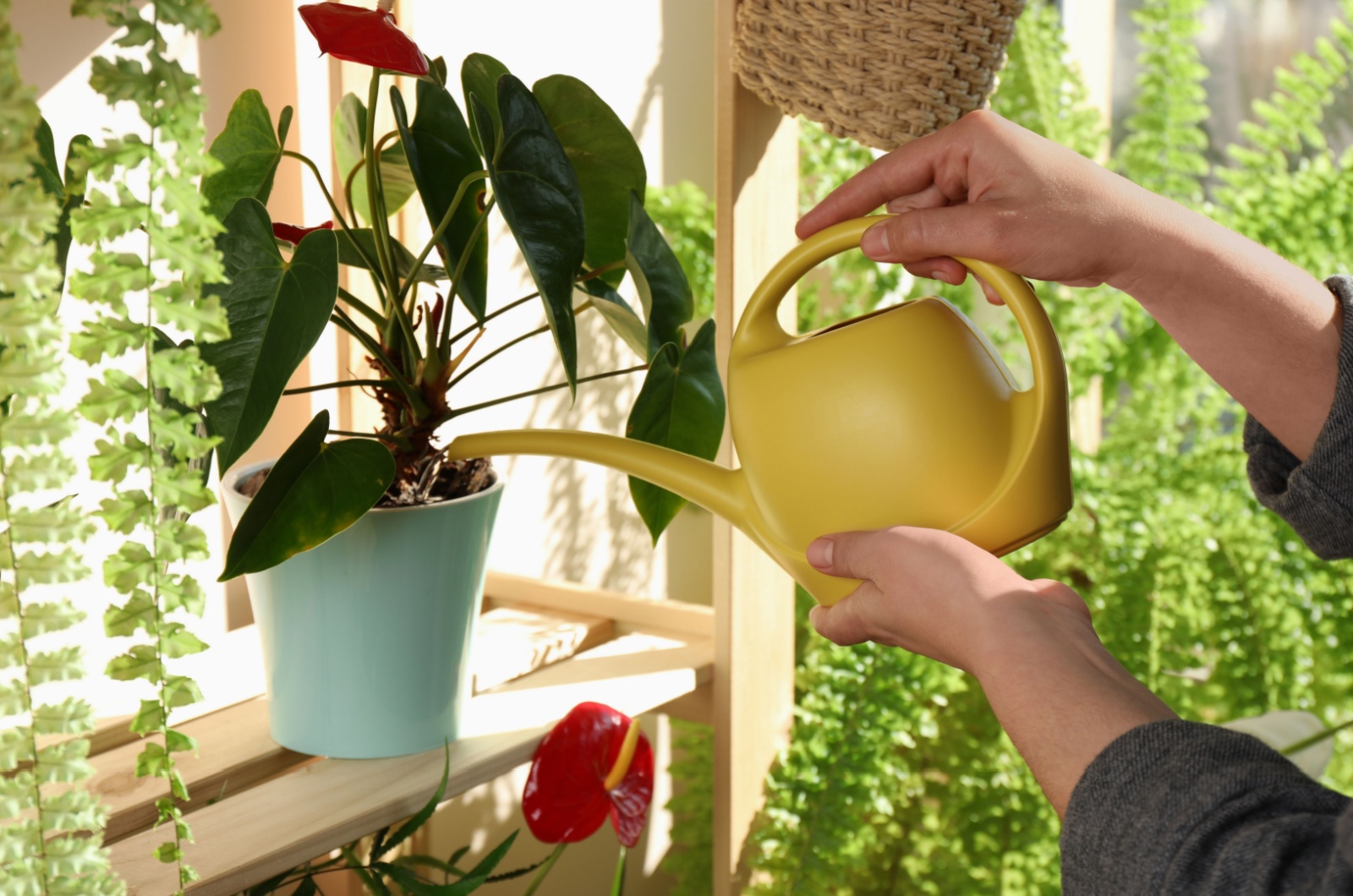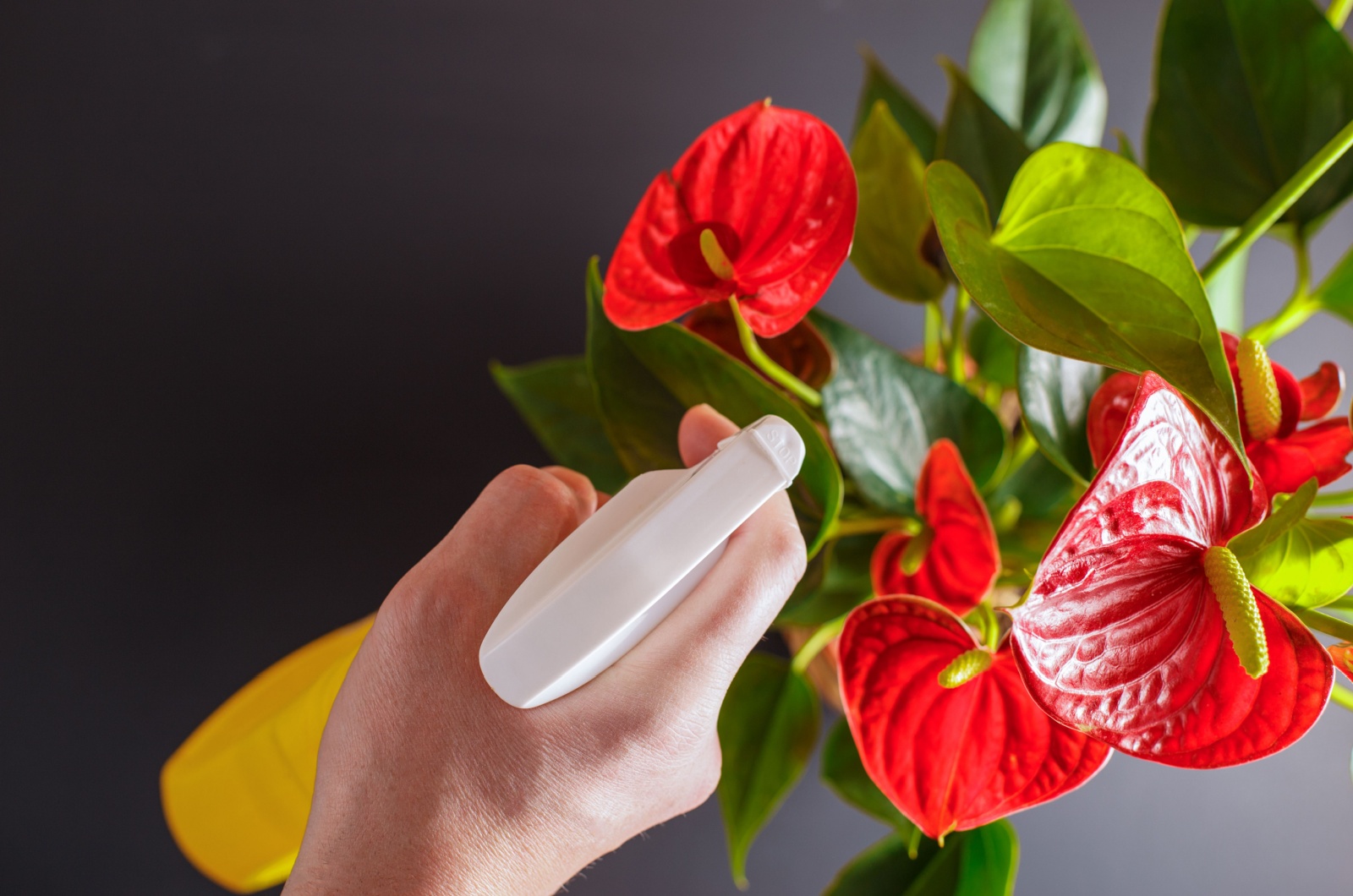I remember the first time I got an Anthurium plant. It was pretty small but had 6 flowers (yes, I counted them!). It stole the show in my plant collection and the only thing on my mind was getting more of them.
Then, all of a sudden, it started dropping its flowers. I can’t even describe how I felt back then and how much I panicked.
Instead of buying new Anthuriums, I set a different goal: get the current one to bloom again! I have to admit that it took me some time to learn what these plants really need to thrive. Just to clarify, it wasn’t sick or infested, but the conditions around it were simply wrong.
And once I figured it out and fixed everything, my prized plant rewarded me with its splendid red blooms! Now let’s do the same for your Anthurium!
1. Start By Ensuring Light, Light, And More Light!
If you’re a newbie gardener, that’s the sentence you’ll be hearing all the time! Almost every houseplant loses its flowers and stops blooming if it doesn’t get enough light.
And Anthuriums aren’t an exception. Bright but indirect light is the key to the healthy development of these stunning plants.
Beginners often struggle to understand this light level. I know because I was one of them.
To put it simply, you should never expose your Anthurium to direct sunlight because it could quickly scorch the leaves. Make the light indirect by putting sheer curtains on your windows!
2. Feed Your Anthurium
When I compare Anthurium to my other indoor green buddies, it definitely doesn’t deserve the nickname “heavy feeder”.
Still, you can’t skip feeding completely. The fertilizing schedule for Anthuriums is simple to understand. They need phosphorus to produce more blossoms, so search for fertilizers rich in this nutrient.
I apply fertilizer every month during the growing season and it seems my Anthuriums enjoy it!
But I have to warn you about two things:
First, dilute the fertilizer to half-strength before using it to avoid burning the roots.
Second, don’t feed it too often and hope it will produce more blooms with more food! This will do more harm than good.
I learned both of these things the hard way!
3. Always Check The Soil Before You Add Any Water
What causes the majority of problems in plants? Oh yes, incorrect watering. This is the part you can mess up the most.
Overwatering or underwatering an Anthurium won’t only cause it to lose flowers, but it can seriously affect its overall health.
You know what’s the biggest problem? Sticking to a fixed watering schedule. Adding water every other Sunday won’t do much for your plant.
Listen to your plant instead. Wait, what? Yes, your Anthurium will tell you when it’s thirsty. The only thing you need to do is stick your finger in the growing substrate.
If the top part of the soil is dry, you can proceed with irrigating your Anthurium. If not, wait for 2-3 more days and check again.
4. Don’t Forget To Repot!
Even if you ensure all the conditions, your Anthurium won’t bloom if its roots are overcrowded. The good news is that your plant keeps growing, but you need to repot it from time to time.
I do this every 3 years but you can repot sooner or later than this, depending on the growth rate of your plant. Simply check the holes in the bottom of your planters. If some roots are poking through, it’s time for a new and slightly larger pot!
Always use fresh soil when repotting because the old one doesn’t contain a lot of nutrients anymore and can be contaminated.
5. Remember That These Tropical Beauties Enjoy High Humidity
The easiest way to get tropical plants to thrive is to recreate the conditions found in their native habitat. Easier said than done, right?
Humidity seems to be the biggest issue here. Anthuriums can’t produce blooms if the air around them is too dry!
I tried to mist mine regularly and I even put a pebble tray with water below the pot. But it simply wasn’t enough. My Anthurium started blooming once I put a humidifier close to it.
6. Make Your Anthurium Cozy By Ensuring The Ideal Temperature Range
And the last thing you need to do is adjust temperatures around your Anthurium. Anything between 70–81°F works perfectly for these beauties and they’ll have no trouble producing new growth (and new blooms!).
Do not put this plant anywhere near cold drafts, heaters, and air conditioners. It can’t survive any sudden temperature changes.
Last, but not least, your Anthurium will need a period of rest. Once it finishes flowering, it needs lower temperatures, around 61–63°F. They’ll sleep over the winter and wake up in spring, well-rested and ready for the new growing season!
Remember, patience remains the virtue that truly crowns a successful journey with Anthuriums. But the sooner you start, the faster you’ll see the gorgeous bloom display!




